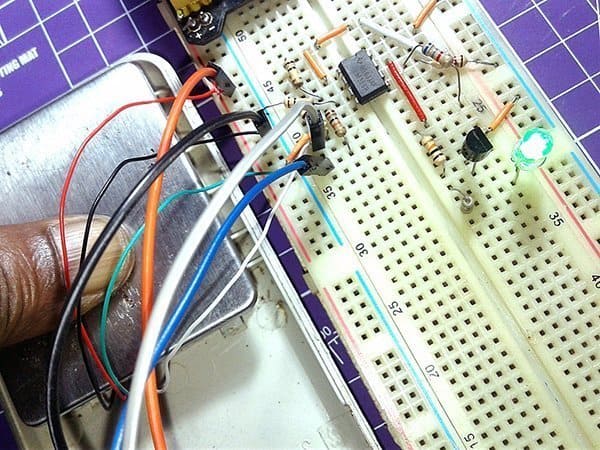Mini Alarm Loop is a simple battery-powered security device to secure worthful goods outside of your home or office, such as bicycles, garden tools, furniture, etc. It sets off a sharp warning signal if severed or sabotaged.
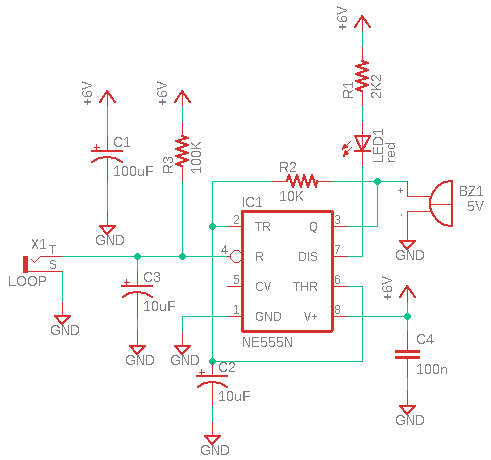
As can be seen in the schematic above, the circuit is nothing but a simple free-running oscillator wired around the ubiquitous timer chip NE555N (IC1). The low frequency oscillator then drives an active buzzer (BZ1) directly.
The simplest free-running oscillator circuit connects the output (Pin 3) of the 555 chip (IC1) directly to the timing capacitor (C2) via a single resistor (R2) as shown.
So, when the output at Pin 3 of IC1 is HIGH, C2 charges up through R2. When the voltage across C2 reaches 2/3Vcc, Pin 6 of IC1 causes the output at Pin 3 to change state and goes LOW.
The capacitor C2 now discharges back through the same resistor R2 until Pin 2 of IC1 reaches 1/3Vcc causing the output to change state once again.
Since the capacitor C2 continually charges and discharges between 2/3Vcc and 1/3Vcc back and forth through the same resistor R2, it creates an iterating HIGH/LOW state at the output Pin 3.
Also, there is a red indicator (LED1) wired to pin 7 of IC1 that lights up in a steady state when the wire loop connected to the LOOP socket (X1) is intact. But when the loop is broken, it starts flashing to raise a visual alert.
The external wire loop enables and disables the alarm function through the Reset Input (Pin 4) of IC1. The alarm does not function in normal state because the reset pin is held LOW by the wire loop.
I habitually tested this circuit idea on a breadboard at first (see below).
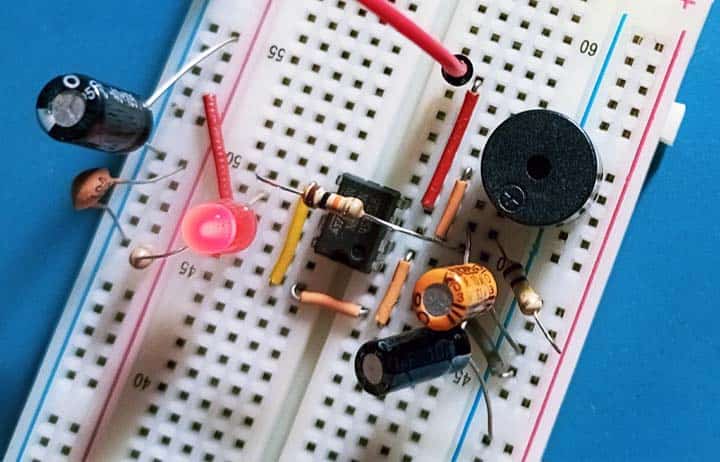
A small piece of regular perfboard is sufficient for making the circuit. After construction, it can easily fit inside a small prototyping case. A pair of RCA sockets (wired in parallel) would be fine to use as the wire loop connector X1.
Also, there are no strict rules for choosing the 6V battery. You can go for the standard 1.5Vx4 AA or AAA cell combination or opt for something more compact and practical. As an example, below you can see a 6V/280mAh Rechargeable Alarm Battery.
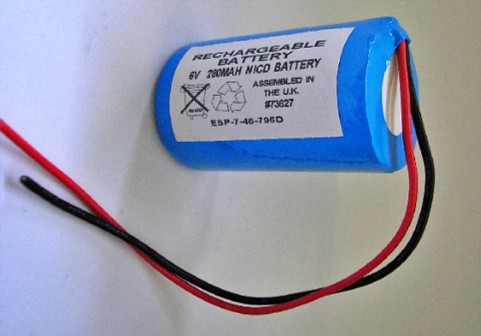
In conclusion, this mini alarm loop was originally designed to protect the contents of my garden shed, although it would also be ideal for other security applications. The only thing missing from this simple version is the latching alarm function.
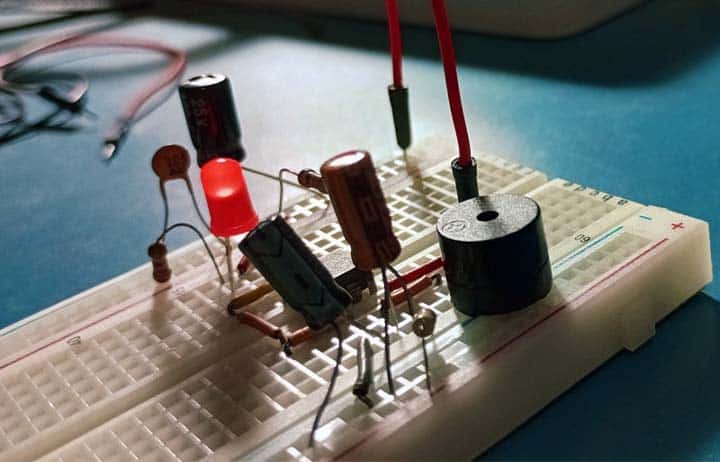
So, your valuable items can be protected by a mini alarm loop system similar to the one presented here. The system employs a security cable (wire loop) which is threaded through the items to be protected, and the alarm will be fired instantly if the loop becomes open. Try it out and have fun!



